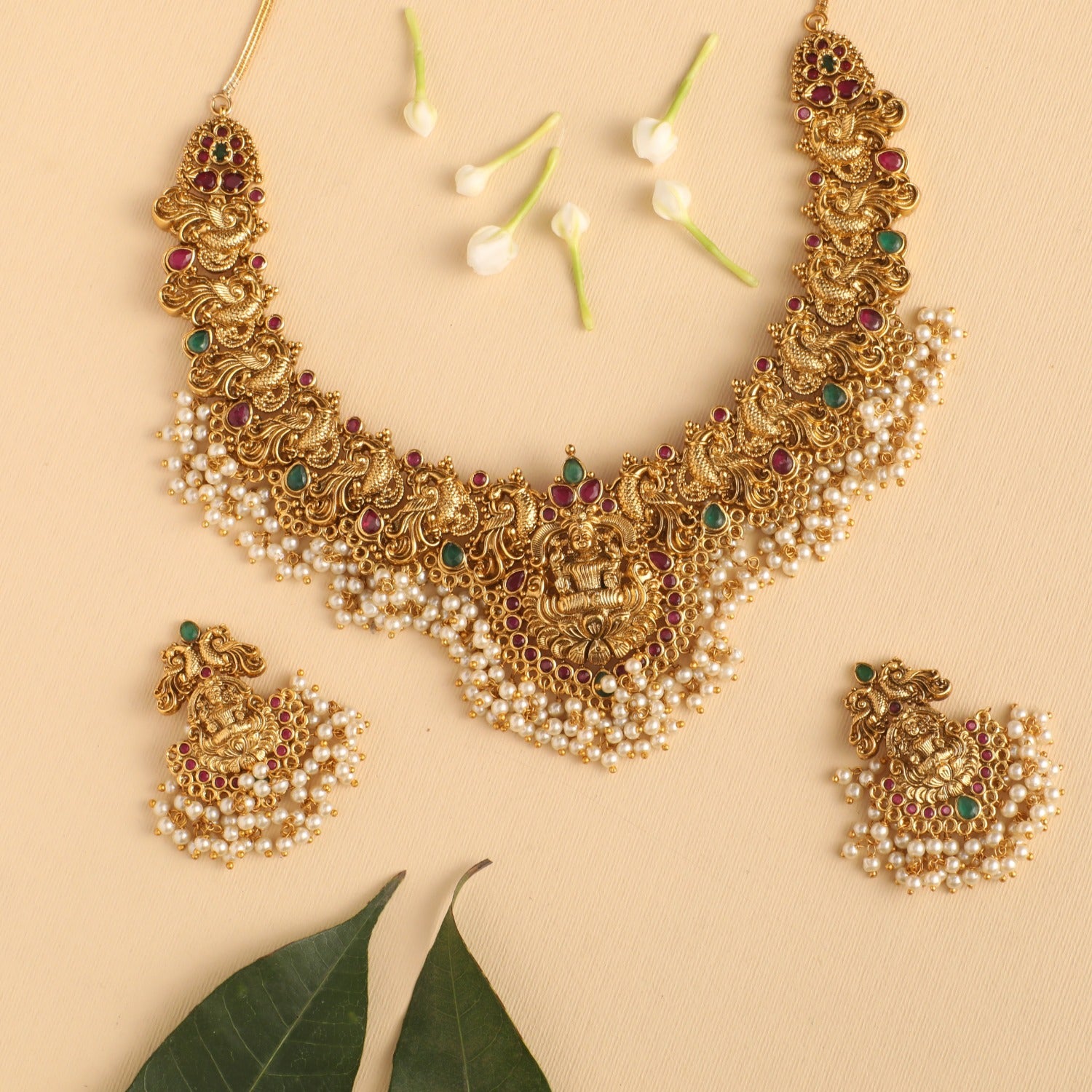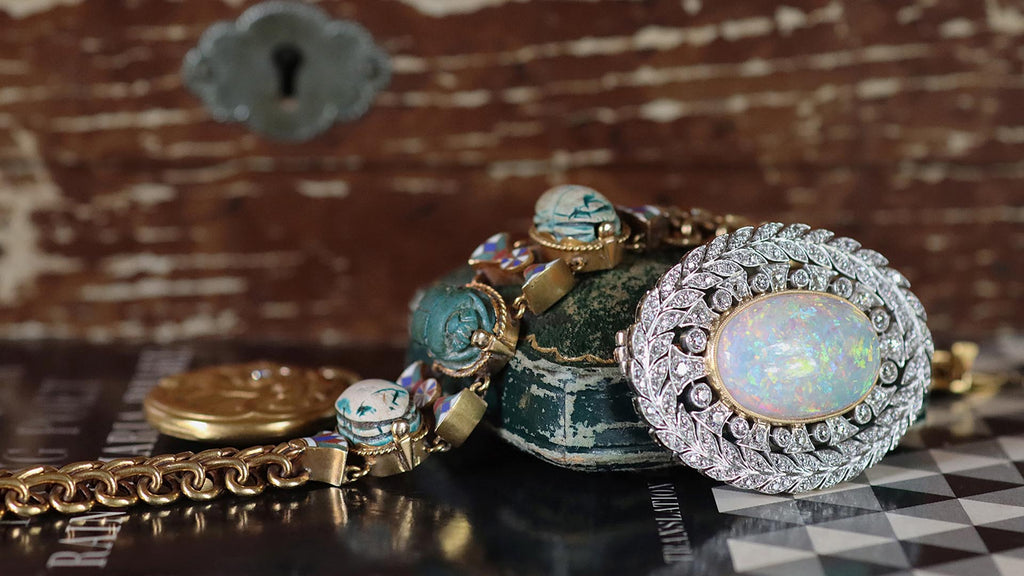The Interesting Globe of Vintage Fashion Jewelry: Looking Into Its Several Groups and Features
Vintage fashion jewelry represents a fascinating junction of artistry and history, encapsulating the significance of numerous eras through its intricate designs and materials. Each classification, from the romantic Victorian pieces to the cutting-edge Art Deco creations, reveals not just visual preferences but also social stories of the times. Recognizing the differentiating characteristics of these pieces, together with their remarkable products and gems, opens a home window right into the past that is both enlightening and appealing. antique jewelry stores austin tx. As we check out these elements further, one may wonder what hidden tales exist within the beautiful workmanship of each antique gem.
Historical Ages of Antique Fashion Jewelry
Vintage jewelry is delicately linked to the historic durations in which it was produced, showing the imaginative patterns, cultural values, and technical innovations of those times. The evolution of jewelry layout can be mapped via various famous ages, each noted by distinct styles and materials.
The Georgian era (1714-1837) is defined by detailed styles and using natural motifs, frequently incorporating gems such as garnets and rubies. antique rings austin. Following this, the Victorian period (1837-1901) saw the introduction of emotional fashion jewelry, with designs that often communicated individual significances, such as necklaces and mourning pieces
The Edwardian period (1901-1910) accepted elegance, using platinum and delicate filigree job, while Art Nouveau (1890-1910) concentrated on natural kinds and using enamel, showing the impact of nature.
The Art Deco period (1920s-1930s) presented geometric forms and strong shades, showcasing innovations in craftsmanship and materials. Each of these eras not just highlights the imaginative technology of its time but also works as a reflection of the social and social changes that influenced the world of precious jewelry. Recognizing these historic contexts improves the recognition of antique jewelry today.
Key Attributes to Determine
When reviewing antique precious jewelry, several crucial qualities can help identify its age and authenticity. The products used are vital; items from different periods commonly feature particular metals and gemstones. As an example, Victorian fashion jewelry regularly includes gold, while Art Deco pieces may make use of platinum and dynamic colored rocks.
Next, workmanship is a substantial sign. Handcrafted items, common in earlier periods, show special flaws and details that mass-produced items lack. antique jewelry austin. Examining the setup and stone placement can disclose signs of handwork, such as uneven prongs or varying stone forms
Furthermore, characteristics and stamps play a crucial role in verification. Many antique pieces bear marks indicating the steel's pureness and the supplier's origin, which can provide important insights right into the jewelry's background.
Finally, layout themes typically mirror the era's aesthetic trends. Art Nouveau is defined by flowing lines and natural kinds, while Retro jewelry accepts vibrant, geometric shapes. By evaluating these vital qualities-- products, workmanship, hallmarks, and style concepts-- collectors and enthusiasts can better ascertain the authenticity and historic value of antique jewelry items.
Popular Vintage Jewelry Classifications
Different groups of antique jewelry showcase the abundant background and diverse styles that have developed gradually. Among one of the most popular classifications are Victorian, Art Nouveau, Edwardian, and Art Deco, each showing the visual fads and social influences of their particular durations.
Victorian precious jewelry, extending from 1837 to 1901, is identified by luxuriant layouts and nostalgic motifs, commonly incorporating significance and detailed craftsmanship. image source Art Nouveau, which flourished between 1890 and 1910, highlights organic kinds, flowing lines, and nature-inspired concepts, often featuring enameling and innovative strategies.

Furthermore, there are specific groups like Georgian and Retro fashion jewelry, each with one-of-a-kind characteristics and historic value. Collectors and enthusiasts appreciate these groups not just for their beauty however additionally for the tales they tell about the eras in which they were produced.

Notable Materials and Gemstones
Exploring significant materials and gems utilized in antique jewelry discloses the detailed workmanship and aesthetic worths of different periods. Antique precious jewelry showcases a varied range of products, each offering special qualities and value. Gold and silver, widespread for their malleability and luster, have actually been favored for centuries, usually decorated with detailed engravings or lattice work.
Gems also play an essential role in specifying the allure of antique pieces. Rubies, revered for their sparkle, were typically embeded in Victorian precious jewelry, highlighting both opulence and status. Tinted gemstones such as sapphires, emerald greens, and rubies became icons of romance and were commonly integrated right into detailed styles during the Art Deco period.
Additionally, less traditional materials like enamel and pearls arised, adding deepness and texture to several designs. Enamel strategies, especially in the Renaissance, showcased vibrant shades and thorough scenes, while pearls, coveted for their natural charm, were regularly used in both necklaces and jewelry.
The variety of materials and gemstones in antique jewelry not just reflects the imaginative patterns of the moment yet also offers understanding into the social and social values of the periods in which these pieces were produced.
Caring for Vintage Pieces
Correct look after antique precious jewelry is necessary to preserve its beauty and stability with time. Each piece narrates, frequently showing the craftsmanship of a certain age, and thus calls for specific interest.
To begin, it is essential to keep see this antique jewelry in a regulated environment, away from straight sunlight and humidity. Regular cleansing is vital, however ought to be come close to with caution; stay clear of extreme chemicals and abrasive materials.

Professional description examinations and maintenance can additionally be beneficial. A certified jeweler can analyze for loose stones, compromised settings, or other issues, making certain the longevity of these valued things. By complying with these care guidelines, antique jewelry can continue to be not only a cherished treasure however additionally a stunning depiction of art and background.
Conclusion
The exploration of antique fashion jewelry reveals a varied landscape formed by historic eras, imaginative motions, and distinctive workmanship. Each category, from Victorian to Art Deco, showcases one-of-a-kind characteristics and products that reflect the cultural and artistic worths of its time. Recognizing these elements not just boosts gratitude for antique items however also underscores the importance of conservation. Proper treatment makes sure the longevity of these artefacts, permitting future generations to experience the appeal and importance of antique jewelry.